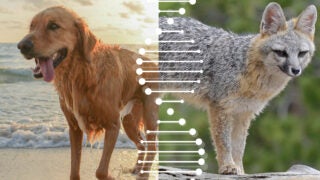3-D Printing Takes Engineers Out of This World
USC Viterbi researchers aim to spread their 3-D printing technology throughout our world—and beyond.
Imagine a machine that could pop out an object at your mere command. USC Viterbi School of Engineering PhD students Jens Windau and Kai Chang are making it happen.
In 2013 they decided to produce the world’s first all-in-one 3-D printer, copier, scanner and fax machine. Their vision: Just push a button and within minutes the printer would print a ring or toy by extruding plastic through its nozzle.
Their timing couldn’t have been better.
The market for 3-D printing is sizzling. Worldwide revenue for these products is expected to jump to $10.8 billion by 2021, according to Goldman Sachs. Car companies now use 3-D printing to prototype vehicle parts, and shoe manufacturers are even printing sneakers. In his 2013 State of the Union address, President Barack Obama said 3-D printing could “revolutionize the way we make almost everything.”
Unfortunately, Windau and Chang had little more than a good idea and a lot of determination. But that was enough to earn their fledgling AIO Robotics a coveted spot in the USC Viterbi Startup Garage, a business accelerator for USC-affiliated startups. The 12-week business boot camp netted them their 3-D printer prototype named Zeus.
So hot is Zeus that a September Kickstarter campaign surpassed its $100,000 fundraising goal in just 24 hours. “Zeus,” according to Forbes.com, “may be a game changer in getting [3-D] printers into the consumer market.” Amazon plans to soon sell the machine, which enables designers to “fax” an object from one Zeus printer to another one anywhere in the world, producing an exact replica in 15 minutes.
“We would like to bring a 3-D printer into everyone’s home,” said AIO Robotics CEO Windau.
Zeus is one of several 3-D printing technologies that have emerged at USC.
USC Viterbi Professor Yong Chen and his research team found a way to fabricate items more quickly than today’s 3-D printers—about 20 times faster than the popular MakeBot printer, by Chen’s estimates.
Fellow engineering Professor Behrokh Khoshnevis created a robotic 3-D printer that he believes will one day quickly build low-cost housing. His “contour crafting” technology, he said, could produce a 2,500-square-foot home in only 24 hours compared to the six to nine months it now takes to build the typical American home.
NASA funding may take contour crafting to the moon, Mars and beyond. Khoshnevis aims to use solar power to melt elements of the moon’s and Mars’ surfaces to transform them into concrete-like building materials. He envisions robots printing extraterrestrial airports, houses and even greenhouses.
Windau also has ambitious plans.
“We can’t wait to begin selling our copiers,” he said. “We hope to have them in thousands of American schools, design studios and households by the end of the year.”



